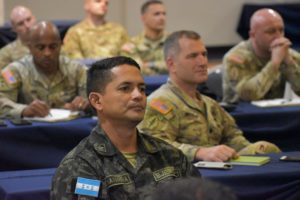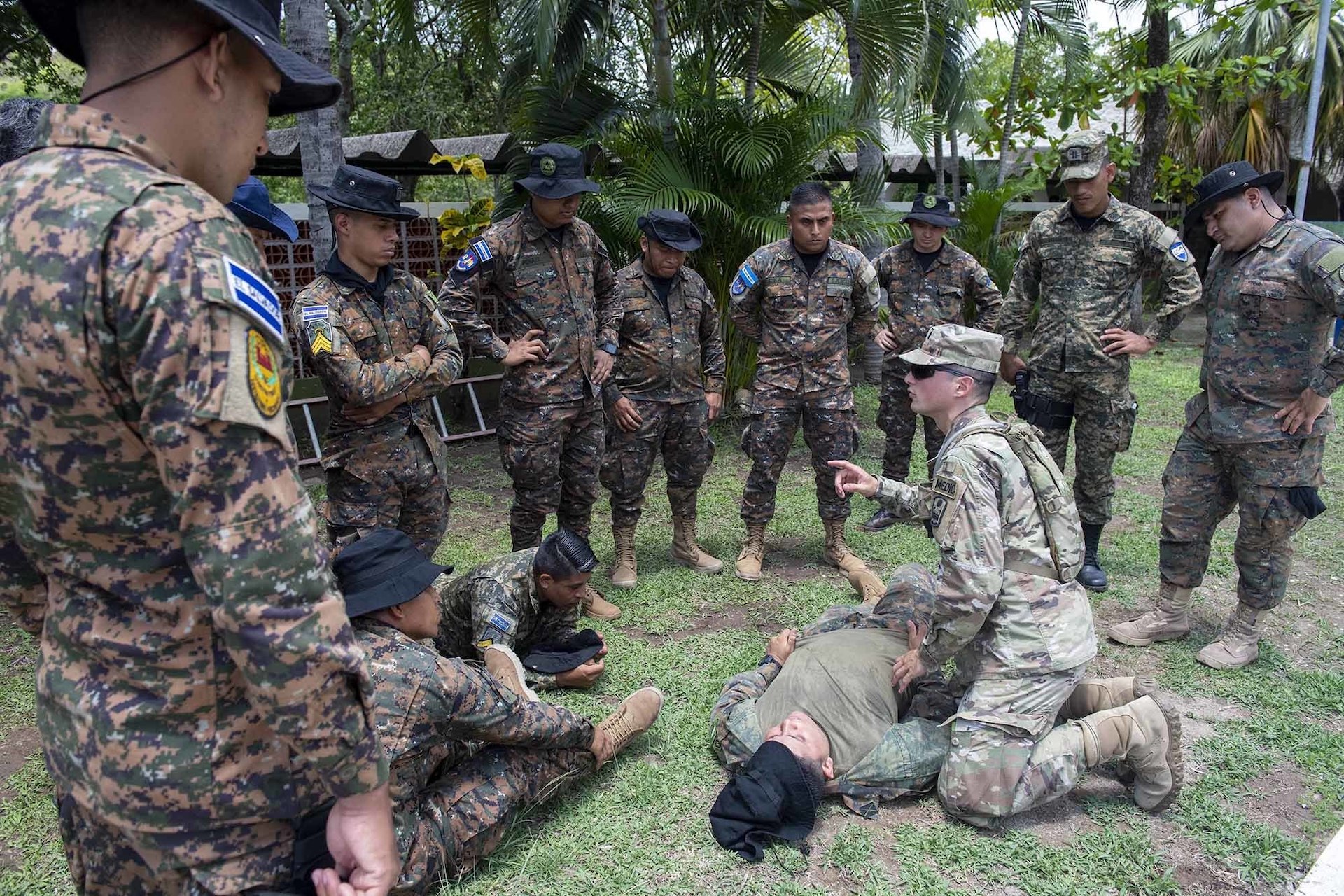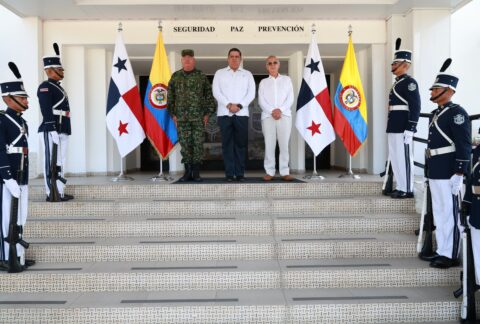In recent years, Latin America and Caribbean countries have suffered major environmental disasters whether by torrential hurricanes or catastrophic earthquakes in the region, causing floods and landslides that left thousands of people displaced and a high human death toll.
During a two-week period in 2020, Guatemala and Honduras were slammed by hurricanes Eta and Iota, which led U.S. Army South to deploy soldiers to the region to assist in humanitarian assistance efforts.
As part of Army South’s mission to respond and be ready in disaster situations, the command facilitated the first-ever CENTAM GUARDIAN Exercise held May 1-20, to build readiness, resilience, and confidence across the Central American region.

Hosted by El Salvador, military personnel, first responders, and disaster relief and recovery specialists from Guatemala, Honduras, Costa Rica, Panama, Dominican Republic, and U.S. Agency for International Development Bureau of Humanitarian Affairs arrived to take part in the three-week exercise.
“This exercise is an important opportunity to build the capacity of our armies and critical civilian support organizations,” said Colonel Chip Karels, U.S. Army South G3/7 director of Training and Exercises (TREX). “Each of the three phases of the exercise were designed to build both capability and capacity from the tactical, soldier skills level to multinational disaster response.”
G7 TREX planners led the planning effort for CENTAM GUARDIAN 22, but Col. Karels mentioned creating the exercise was an Army South team effort across the command with planners from other directorates providing crucial support in their areas of expertise.
Divided into three phases, CENTAM GUARDIAN consisted of a field training exercise (FTX), a humanitarian assistance and disaster response table-top exercise (TTX), and an operational command post exercise.
The FTX involved U.S. soldiers from 7th Special Forces Group, Puerto Rico Army National Guard, and 60 soldiers from the Salvadoran Army. The FTX consisted of basic soldier skills, including first aid, movement, land navigation, and basic rifle marksmanship.
“The multinational nature of CENTAM GUARDIAN inevitably led to challenges based on competing requirements and the diverse areas of training within each event,” Col. Karels said. “The support from the partner nations was excellent and it was only through their significant efforts that the exercise was able to succeed.”
Prior to the TTX, the participants received two days of academic classes to review their basic knowledge of urban search and rescue methodologies to prepare them for the disaster scenario.
“It’s not a matter of ‘if,’ but ‘when,’” said Jesus Escalona, Costa Rica Red Cross director of Operations, expressing the reality of natural disasters which takes place in the region. For the TTX, the scenario involved an earthquake causing major damage in El Salvador to include building collapses, trapped survivors, and landslides.
Evaluation from the academic portion and the table-top exercise provided Hernan Ramos, group leader, Search and Rescue Unit, Permanent Contingency Commission (COPECO) of Honduras, to reevaluate his organization’s practices on urban search and rescue.
COPECO is part of a Central American network of government disaster relief agencies known as the Coordination Center for the Prevention of Natural Disasters in Central America.
“We are able to look at our current standard operating procedures, the equipment we have, and examine how we jointly work with another country in the event we would have to have a multinational response,” Ramos said. “An earthquake that happens in Honduras, for example, could have devastating impacts on our neighboring countries as well. This exercise allows for all the responders to speak the same language.”
According to Col. Karels, the CPX was designed to develop collaboration and information sharing opportunities to combat transnational organized threats. Honduras and Guatemala participated with brigade headquarters elements, while El Salvador worked at the battalion level.
The CPX was structured around a coordination cell manned by liaison officers from all three partner nation armies. Events were injected into a national headquarters, processed, and then passed to the coordination cell. The coordination cell turned the data into information and passed it to the appropriate national headquarters to process for action.
The CPX and HA/DR TTX were supported by soldiers from the 321st Civil Affairs Brigade and the 54th Security Forces Assistance Brigade.
During the closing ceremony, Brigadier General Lynn M. Heng, Army South deputy commanding general, praised the Salvadorans for hosting the exercise and highlighted the significance of the training.
“I thank our El Salvadoran hosts and everyone who has worked so hard bringing this exercise to life — it was truly a tremendous training event,” Brig. Gen. Heng said. “The importance of this cannot be overstated since most humanitarian missions occur on short notice and we simply never know when we could find ourselves working together in the future. Our ability to coordinate and respond collectively as a region to facilitate the timely arrival of humanitarian assistance will certainly support the effort to save lives and alleviate suffering.”
With the 2022 Atlantic hurricane season on the horizon, Ramos mentioned he was appreciative of the U.S. Army for coordinating CENTAM GUARDIAN 22. As he prepared for departing El Salvador back to Honduras, he felt his team benefitted from the training scenarios would be ready “if and when” a natural disaster strike.
“Having the U.S. Army coordinate this exercise is great, coming from a technical and economic stance, because the regional countries don’t have a lot of support,” Ramos said. “For us, having an ally that has the technical capability, financial power, and experience in the field is a great help for us to strengthen our national capacity in terms of emergency management.”









